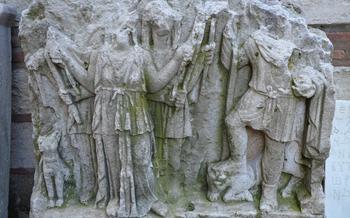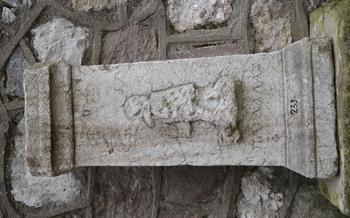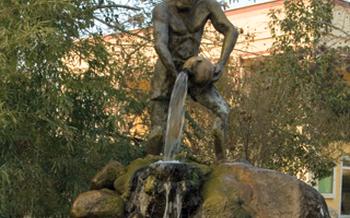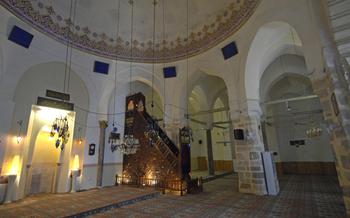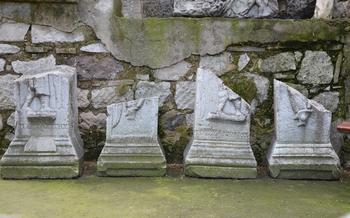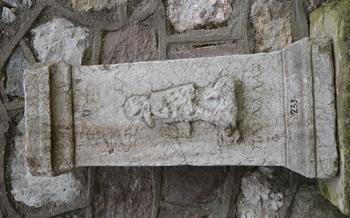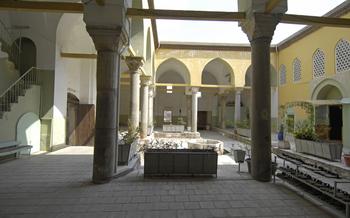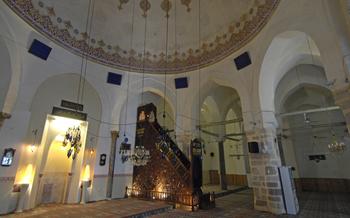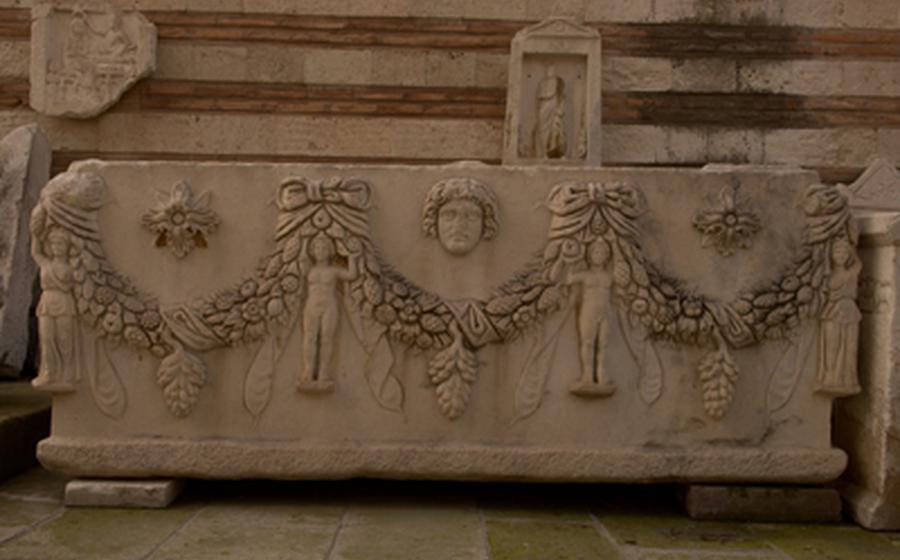
Manisa Selvilitepe Ancient Tumulus
- Manisa Selvilitepe Ancient Tumulus: A Historical Overview
- Location and Accessibility
- Architectural Features
- Excavations and Discoveries
- Historical Significance
- Cultural and Religious Importance
- Tourism and Visitor Facilities
- Things to Do and See
- Local Cuisine and Restaurants
- Accommodation Options
- Shopping and Local Markets
- Safety and Security
- Additional Tips for Visitors
- Nearby Attractions and Day Trips
- Insider Tip: Unveiling the Hidden Gem of Manisa Archaeology
Manisa Selvilitepe Ancient Tumulus: A Historical Overview
The Manisa Selvilitepe Ancient Tumulus stands as a testament to the rich history and cultural heritage of the region. This ancient burial mound, dating back to the 3rd millennium BC, is believed to have been constructed by the Lydians, an influential civilization that once ruled over much of Western Anatolia. The tumulus, with its impressive size and unique architectural features, serves as a window into the past, offering valuable insights into the funerary practices, beliefs, and engineering prowess of the ancient Lydians.
Archaeological excavations conducted at the site have unearthed a wealth of artifacts, including pottery, jewelry, and tools, shedding light on the daily lives and craftsmanship of the Lydian people. These discoveries have played a crucial role in understanding the cultural and historical significance of the tumulus, adding to its mystique and allure.
Legends and stories woven around the Manisa Selvilitepe Ancient Tumulus have further enriched its allure. One tale speaks of a brave warrior buried within the tumulus, accompanied by his loyal horse and treasures from his conquests. Another legend tells of a beautiful princess interred in the mound, surrounded by her precious possessions and guarded by mythical creatures. These stories, passed down through generations, have added to the intrigue and fascination surrounding this ancient site.
Location and Accessibility
The Manisa Selvilitepe Ancient Tumulus is strategically situated in the Selvilitepe neighborhood of Manisa, a city renowned for its historical and cultural heritage. Its precise coordinates are 38°37'16"N 27°24'41"E, making it easily accessible to visitors from various regions.
Reaching the tumulus is a breeze, thanks to its convenient location near major transportation hubs. Visitors can opt for public transport, which offers regular bus services connecting Manisa city center to the Selvilitepe neighborhood. Alternatively, renting a car provides the freedom to explore the area at your own pace. Guided tours are also available for those seeking a more immersive experience, with knowledgeable guides providing insights into the tumulus's history and significance.
The tumulus is situated approximately 5 kilometers from Manisa city center, a short and scenic drive that takes around 15 minutes. From major cities like Izmir or Bursa, the journey is slightly longer, taking about 1 hour and 30 minutes by car. Visitors with disabilities or special needs can inquire about accessible transportation options to ensure a hassle-free visit.
Architectural Features
The Manisa Selvilitepe Ancient Tumulus stands as a testament to the remarkable architectural prowess of ancient civilizations. Its unique shape, measuring 30 meters in diameter and 6 meters in height, is believed to have been constructed using a combination of earth and stone. The tumulus features a central chamber, accessible through a narrow entrance, which may have served as a burial chamber or a sacred space for religious rituals. The chamber is surrounded by a series of smaller chambers, possibly used for storage or other purposes. The tumulus's exterior is adorned with intricate carvings and decorative elements, providing valuable insights into the artistic traditions of the time. These architectural features, combined with the tumulus's imposing size, create a sense of awe and wonder, transporting visitors back in time to a world steeped in ancient history and cultural significance.
Excavations and Discoveries
The Manisa Selvilitepe Ancient Tumulus has been the subject of several archaeological excavations over the years, revealing a wealth of fascinating discoveries. In the 1950s, a team of archaeologists led by Professor Ekrem Akurgal conducted extensive excavations at the site, unearthing numerous artifacts that shed light on the daily life and customs of the ancient population. Among the most notable findings were pottery fragments, tools, and jewelry, providing valuable insights into the material culture of the time. The excavations also revealed the presence of several burial chambers within the tumulus, containing human remains and grave goods, offering glimpses into the burial practices and rituals of the ancient civilization. These discoveries have significantly contributed to our understanding of the region's cultural and historical heritage and continue to draw the attention of archaeologists and historians to this captivating site.
Historical Significance
The Manisa Selvilitepe Ancient Tumulus holds immense historical significance, acting as a valuable cultural heritage site. It serves as a window into the past, offering insights into the history and development of ancient civilizations in the region. The tumulus's presence has had a profound impact on the social, economic, and religious practices of the time.
Archaeological findings at the site have enriched our understanding of ancient engineering and architectural techniques. The tumulus's unique construction methods and materials provide valuable lessons for contemporary architects and engineers, highlighting the ingenuity and skill of ancient builders. Its remarkable longevity stands as a testament to their expertise and craftsmanship.
Moreover, the tumulus has shed light on the cultural beliefs and practices of ancient populations. The presence of artifacts and symbols within the tumulus hints at its potential use as a place of worship, burial, or ceremonial rituals. These discoveries have contributed to our knowledge of ancient Anatolian religions and their influence on the development of regional cultures.
Cultural and Religious Importance
The Manisa Selvilitepe Ancient Tumulus holds profound cultural and religious significance, embodying the beliefs and practices of ancient civilizations. It served as a sacred space, likely used for religious rituals, ceremonies, and acts of worship. The presence of symbolic artifacts, religious symbols, and burial chambers suggests its role as a spiritual center. The tumulus was not merely a burial ground but a place where the living connected with the deceased, honored their ancestors, and sought divine guidance. Understanding the cultural and religious importance of the tumulus provides a deeper appreciation for the spiritual beliefs and practices that shaped ancient societies.
Tourism and Visitor Facilities
The Manisa Selvilitepe Ancient Tumulus offers a range of facilities to enhance the visitor experience. A modern visitor center provides comprehensive information about the tumulus's history, significance, and ongoing archaeological research. Guided tours led by knowledgeable experts are available for a deeper understanding of the site's cultural and historical context. These tours offer insights into the tumulus's construction, ancient burial practices, and the symbolic importance of its architectural features. For a more immersive experience, visitors can explore the tumulus's chambers and tunnels, marveling at their intricate design and the remnants of ancient artifacts. The site is accessible to visitors with disabilities, ensuring an inclusive and enjoyable experience for all.
Things to Do and See
The Manisa Selvilitepe Ancient Tumulus offers a captivating experience for visitors interested in history, culture, and exploration. Enter the tumulus and immerse yourself in the ancient world as you walk through its chambers and discover its architectural marvels. Guided tours are available to provide insights into the history, significance, and cultural context of this remarkable site. Capture the beauty and grandeur of the tumulus through photography, ensuring you preserve memories of your visit. Combine your exploration of the tumulus with other nearby attractions or historical sites, such as the Manisa Museum or the Sardis Ancient City, for a comprehensive understanding of the region's rich cultural heritage.
Local Cuisine and Restaurants
A visit to the Manisa Selvilitepe Ancient Tumulus offers a unique opportunity to indulge in the culinary delights of the region. From traditional Turkish dishes to local specialties, there's something to satisfy every palate.
For an authentic taste of Turkish cuisine, try the mouthwatering pide, a boat-shaped bread filled with minced meat, vegetables, or cheese. Another must-try is Manisa kebabı, succulent lamb grilled to perfection and served with rice and vegetables.
Vegetarians and vegans will find plenty of options to choose from, such as imam bayıldı, a delicious dish made with stuffed eggplants, or zeytinyağlı yaprak sarması, tender grape leaves wrapped around a flavorful rice filling.
To accompany your meal, sip on a refreshing glass of şalgam suyu, a traditional Turkish beverage made from fermented turnips, or indulge in a sweet treat like cezerye, a carrot-based dessert with a unique texture and flavor.
When it comes to finding the best dining spots, head to the local restaurants in Manisa city center. Here, you'll find a wide range of options, from traditional Turkish eateries to modern fusion restaurants.
For a truly memorable dining experience, consider visiting one of the many köy kahvaltısı (village breakfast) spots in the surrounding countryside. These charming establishments offer a spread of fresh, local ingredients, including homemade jams, cheeses, olives, and freshly baked bread.
No matter your culinary preferences, Manisa has something to offer every visitor. Embrace the opportunity to savor the local flavors and indulge in a culinary adventure that will leave you craving for more.
Accommodation Options
When planning a visit to the Manisa Selvilitepe Ancient Tumulus, there are several accommodation options available to suit different preferences and budgets.
For a luxurious and comfortable stay, consider booking a room at the Manisa 5-Star Hotel, which offers elegant rooms, a swimming pool, and a spa.
For a more budget-friendly option, there are several guesthouses and hostels within easy reach of the tumulus. These offer basic but clean and comfortable accommodations, often with shared facilities.
For those seeking a unique and immersive experience, consider staying in a traditional Turkish house or a restored Ottoman mansion. These accommodations provide a glimpse into the region's rich history and culture and offer a truly authentic experience.
No matter your budget or preferences, there are accommodation options available to ensure a pleasant and memorable stay while exploring the Manisa Selvilitepe Ancient Tumulus.
Shopping and Local Markets
The Manisa Selvilitepe Ancient Tumulus is situated in a region renowned for its vibrant shopping and local markets. Visitors can immerse themselves in the bustling atmosphere of these marketplaces and discover a treasure trove of unique items. From traditional handicrafts to exquisite handmade products, there's something for every taste and budget.
In the heart of Manisa, the Arasta Bazaar beckons with its labyrinthine streets and colorful stalls. Here, visitors can haggle for one-of-a-kind souvenirs, intricately woven carpets, gleaming copperware, and aromatic spices. The air is filled with the scent of freshly baked pastries and Turkish coffee, inviting visitors to indulge in local delicacies.
For those seeking a more authentic experience, the weekly farmers' market in Selvilitepe offers an array of fresh produce, homemade jams, and artisanal cheeses. Here, visitors can interact with local farmers and learn about traditional agricultural practices.
When it comes to unique souvenirs, visitors should look out for Manisa's famous mesir paste, a confection made from 41 different spices and herbs. This sweet treat is believed to have medicinal properties and is a cherished symbol of the region.
Whether shopping for souvenirs, indulging in local cuisine, or simply soaking up the vibrant atmosphere, the markets near the Manisa Selvilitepe Ancient Tumulus offer a delightful experience that captures the essence of Turkish culture and hospitality.
Safety and Security
When exploring the Manisa Selvilitepe Ancient Tumulus, visitors should prioritize their safety and well-being. Here are some essential tips to ensure a safe and enjoyable visit:
-
Be aware of your surroundings: Pay attention to your surroundings and remain vigilant for any suspicious activities or individuals.
-
Stay on marked paths: Avoid venturing off designated paths or exploring restricted areas to prevent accidents or damage to the site.
-
Respect the site: Refrain from touching or damaging artifacts, structures, or any part of the ancient tumulus. Respecting the site's historical and cultural significance is crucial for its preservation.
-
Carry necessary supplies: Bring water, sunscreen, and insect repellent, especially during hot or humid weather. Wearing appropriate clothing and footwear for the terrain is also recommended.
-
Be prepared for emergencies: Keep emergency contact information and local authorities' numbers handy in case of an emergency. Be aware of the nearest medical facilities or hospitals in the area.
-
Avoid scams: Be wary of common tourist scams or traps. Avoid purchasing souvenirs or services from unauthorized vendors or engaging in activities that may compromise your safety or well-being.
Additional Tips for Visitors
When visiting the Manisa Selvilitepe Ancient Tumulus, it is essential to consider the following practical tips to ensure a safe and enjoyable experience:
Best Time to Visit: - The most suitable time to visit the tumulus is during spring (April-May) or fall (September-October) when the weather is pleasant. - Avoid visiting during the hot summer months (June-August) due to intense heat and reduced visitor comfort.
Appropriate Attire: - Wear comfortable clothing and sturdy footwear suitable for walking on uneven surfaces. - Consider bringing a hat or sunglasses to protect yourself from the sun.
Essential Supplies: - Carry sufficient water to stay hydrated, especially during hot weather. - Apply sunscreen and insect repellent to prevent sunburn and insect bites.
Respect the Site: - Refrain from touching or damaging the tumulus, its structures, or any artifacts you may encounter. - Respect the historical and cultural significance of the site by behaving respectfully and maintaining silence.
By following these tips, you can make the most of your visit to the Manisa Selvilitepe Ancient Tumulus, ensuring a safe, comfortable, and enriching experience.
Nearby Attractions and Day Trips
The Manisa Selvilitepe Ancient Tumulus is located in a region rich in historical and cultural attractions. Visitors can combine their visit to the tumulus with several day trips to explore the surrounding area. The ancient city of Sardis, located just 15 kilometers from the tumulus, is a must-see for history enthusiasts. Here, visitors can marvel at the ruins of an ancient theater, a gymnasium, and a temple dedicated to the goddess Artemis. The city also boasts a vibrant local market where visitors can find traditional Turkish handicrafts and souvenirs.
For those interested in religious history, a visit to the Manisa Ulu Mosque, built in the 14th century, is a must. The mosque's magnificent architecture and intricate tilework showcase the region's rich Islamic heritage. Visitors can also explore the nearby Manisa Museum, which houses an impressive collection of artifacts from the region's past.
Nature lovers can enjoy a day trip to Spil Mountain National Park, located approximately 50 kilometers from the tumulus. The park offers stunning views of the surrounding countryside and is home to a variety of flora and fauna. Visitors can hike through the park's forests, go birdwatching, or simply relax and take in the natural beauty of the area.
These are just a few of the many nearby attractions that visitors can explore during their stay in Manisa. With its rich history, cultural heritage, and natural beauty, the region offers something for every traveler.
Insider Tip: Unveiling the Hidden Gem of Manisa Archaeology
Beyond the captivating allure of the Manisa Selvilitepe Ancient Tumulus, a hidden gem awaits those who seek a deeper immersion into the region's rich history. Nestled amidst the picturesque landscapes just a short distance from the tumulus, the Manisa Archaeological Museum stands as a treasure trove of ancient artifacts and relics.
Within the museum's walls, visitors embark on a journey through time, tracing the footsteps of ancient civilizations that once thrived in this land. Exquisite pottery, intricate jewelry, and enigmatic sculptures whisper tales of forgotten cultures, offering a glimpse into their daily lives, beliefs, and artistic expressions.
The museum's collection spans various eras, showcasing the evolution of human settlements and cultural exchanges in the region. From the Neolithic Age to the Ottoman Empire, each artifact tells a story, shedding light on the vibrant tapestry of civilizations that have shaped this land.
As you wander through the museum's galleries, let your imagination soar. Picture the artisans who meticulously crafted these objects, the merchants who traded them across vast distances, and the families who cherished them as symbols of their heritage.
Whether you're a history buff, an art enthusiast, or simply curious about the region's past, the Manisa Archaeological Museum is an insider's secret that will leave you captivated and enriched. Don't miss the opportunity to delve deeper into the fascinating world of Manisa's ancient legacy.
